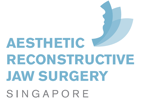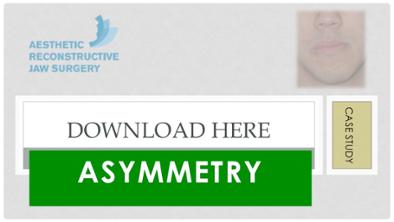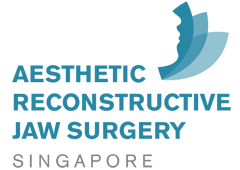Share this
Does facial asymmetry need corrective jaw surgery?
on October 14, 2016

Once of the features we look for when doing a facial aesthetic assessment is symmetry. It is generally believed that symmetry is good and is essential for aesthetics. However, the human face is never perfectly symmetrical. In fact, the human body is not symmetrical. The right side of the body is not a mirror image of the left. The differences between the right and left side give a face its unique character. It is only when the asymmetry becomes the overwhelming feature of the face that it becomes unaesthetic. How do we draw the line?
First, there is no absolute line to cross. Aesthetics is a very personal perception. Afterall, beauty lies in the eye of the beholder. Very often, a new patient will ask me what I think is wrong with her face and to recommend treatment. My usual response is to point out the functional deformities that when corrected can improve function in a tangible way.
The difficulty with facial asymmetry is that most cases do not entail a functional deficit. As such, I do not always highlight the facial asymmetry unless it is part of the patient’s presenting complaint. If it is not something that the patient notices and is bothered by, I usually do not recommend surgery.
I do take objective measurements to compare the right side of the face with the left. This is done both physically on the face as well as on radiographs. Physical measurements in person gives the soft tissue dimensions which can be quite different from the skeletal readings obtained from computerized measurement of the skull radiograph. The two sets of data are analyzed together to arrive at a diagnosis. Facial asymmetry is measure from the frontal view.
The eyes, or more specifically, the orbital sockets, are not usually treated in non-pediatric maxillofacial surgery. I take them as reference landmarks on which to base the measurement of the parts that we can change, the upper and lower jaws. The horizontal distance between landmarks to the facial midline is compared between the right and left sides. A faux plane is placed in the mouth to look for canting, i.e. whether the left and right side of the upper jaw is at the same level or one side is higher placed than the other, something called canting. The vertical distance between the inner, middle and outer corners of the eye and the faux plane is also measured and compared.
Next I look at the chin point. The chin being at the outermost path of any rotational track is likey to be the most conspicuously affected by any asymmtrically development that happens. Somehow, the magical number seems to be 5mm. If the chin is more than 5mm to the left or right of the facial midline, it will be quite noticeable. The chin itself can also be irregular in shape, with more bulk on one side than the other.
While still looking at the face for asymmetry, I will evaluate the angles of the lower jaw, particularly the thickness of the masseter muscles covering the angles. The masseters are powerful muscles and a person who chews predominantly on one side will tend to develop larger masseters on that side, much like a right-handed tennis player have larger right arms. The underlying bone is a reactive tissue and when stimulated constantly, will respond with increased size as well.
The cheek bones, also known as the zygoma, is next. This zygomatic arch contributes to the broadness of the face when viewed from the front. A more pronounced arch on one side will result in significant asymmetrical appearance. The body of the zygoma, on the other hand, contributes to the frontal projection of the midface. Some of these facial features can be corrected with orthognathic surgery, i.e. repositioning of the jaw bones, while others need recontouring surgery. In some cases, the repositioning and recontouring can be done in one sitting while in others, they need to be staged.
Orthognathic surgery must be done with the teeth in consideration. A thorough intraoral examination is essential. While some patients seeking orthognathic surgery are primarily interested in changing their facial, others may be seeking an improvement in their bite. Regardless of intention, both facial features and dental occlusion must be considered together in deriving a treatment plan.
Dental occlusion is classified according to Angle’s Classification which basically groups the different types of bite into three types, Class I is the ideal and is what we seek to achieve through surgery. Class II is often referred to as an Overbite, where the upper teeth are positioned further forward of the lower teeth and Class III is the Underbite, meaning, the lower front teeth are positioned in front of the upper.
Superimposed on each Class of occlusion is the degree of crowding. Severely crowded teeth needs to be corrected orthodontically prior to surgery. For assessment of asymmetry, I compare the dental midline, ie the line between the upper left and right central incisors, to the facial midline. If they are not coincident, treatment to correct them may be in the form of braces, for mild midline shift, or surgery, for more significant deviation. The upper dental midline also has to be checked against the lower dental midline, which in turn needs to be assessed for its relationship to the chin point.
Most cases of facial asymmetry will require a double jaw surgery
Upper jaw surgery is often needed to correct the canting while the lower jaw surgery is needed to achieve a proper bite against the upper as well as to correct the chin point back to the centre. Sometimes, after shifting the jaws into the correct position, contouring surgery may be need to reduce the enlarged side. If the asymmetry is due to muscles, Botox injection is a convenient and safe way to reduce the muscles bulk.
Ultimately, in the absence of a functional problem, facial asymmetry is primarily an aesthetic problem and the choice of whether to correct is subject to the aesthetic sense and preferences of the patient.
The Common Causes of Facial Asymmetry
Facial asymmetry occurs when there is a noticeable difference between the two sides of the face. This can be caused by a variety of factors, including:
- Developmental Factors. Facial asymmetry can be caused by developmental factors, such as uneven growth of the bones and soft tissues of the face during childhood and adolescence.
- Trauma or Injury. Trauma or injury to the face, such as a broken nose or jaw, can cause facial asymmetry.
- Dental or Orthodontic Issues: Dental or orthodontic issues, such as a misaligned bite or missing teeth, can cause facial asymmetry.
- Genetic Factors. Some people may be genetically predisposed to facial asymmetry due to inherited traits.
- Aging. As we age, the skin and soft tissues of the face can lose elasticity and volume, leading to facial asymmetry.
It is important to note that some degree of facial asymmetry is normal and may not require treatment. However, if the asymmetry is noticeable and causes self-consciousness or other issues, it may be worth exploring treatment options with a qualified professional. Facial asymmetry can vary in severity and can affect different parts of the face, including the eyes, nose, mouth, and jawline. It can also be classified as either skeletal or soft tissue asymmetry.
Skeletal asymmetry occurs when the bones of the face are not evenly developed or aligned. This can be caused by developmental factors or trauma, and can affect the shape and size of the face and jawline. Soft tissue asymmetry occurs when the skin, fat, and other soft tissues of the face are not evenly distributed. This can be caused by aging, genetics, or other factors, and can affect the appearance of the eyes, cheeks, and mouth.
Diagnosing facial asymmetry typically involves a physical examination and imaging studies such as X-rays or CT scans. Evaluation by a specialist such as an orthodontist or oral surgeon may also be necessary to determine the underlying cause of the asymmetry and develop an appropriate treatment plan.
Treatment options for facial asymmetry depend on the underlying cause and severity of the condition. Orthodontic treatment such as braces or Invisalign may be used to correct dental or orthodontic issues. Orthognathic surgery may be necessary to correct skeletal asymmetry. Facial fillers or fat grafting may be used to correct soft tissue asymmetry. Dental treatments such as veneers or crowns may also be used to correct dental asymmetry.
While treatment for facial asymmetry can be effective, it is important to be aware of the potential risks and complications associated with these treatments. Your healthcare provider can provide you with information on how to minimize these risks and achieve the best possible outcome.
Facial asymmetry can be caused by a variety of factors and can affect different parts of the face. While some degree of asymmetry is normal, severe or noticeable asymmetry may require treatment. If you are concerned about facial asymmetry, it is important to talk to a qualified healthcare provider to determine the underlying cause and explore treatment options.
The Benefits of Treating Facial Asymmetry
Fixing facial asymmetry can have several benefits, both physical and emotional. These benefits include:
Improved Appearance
Facial symmetry is often associated with beauty and attractiveness. By correcting facial asymmetry, individuals can improve their appearance and feel more confident in their own skin.
Improved Self-Esteem
Facial asymmetry can be a source of self-consciousness and embarrassment for many people. By fixing facial asymmetry, individuals can improve their self-esteem and feel more comfortable in social situations.
Improved Oral Health
Dental and orthodontic issues that contribute to facial asymmetry can also affect oral health. By correcting these issues, individuals can improve their overall oral health and reduce the risk of tooth decay, gum disease, and other oral health problems.
Improved Function
Skeletal asymmetry can affect the function of the jaw and teeth, making it difficult to eat, speak, or breathe properly. By correcting skeletal asymmetry, individuals can improve their ability to perform these functions and enjoy a better quality of life.
Improved Long-Term Health
In some cases, facial asymmetry can be a sign of underlying health issues such as sleep apnea or temporomandibular joint (TMJ) disorder. By correcting facial asymmetry, individuals can improve their long-term health and reduce the risk of these and other related health problems.
Improved Breathing
Facial asymmetry can sometimes cause breathing problems, especially if it affects the position or shape of the nose or jaw. By correcting facial asymmetry, individuals can improve their breathing and reduce the risk of sleep apnea and other related conditions.
Improved Speech
Skeletal or dental asymmetry can sometimes affect speech, causing problems with articulation or pronunciation. By correcting these issues, individuals can improve their speech and communication skills.
Improved Chewing and Digestion
Dental or orthodontic issues that contribute to facial asymmetry can also affect the ability to chew and digest food properly. By correcting these issues, individuals can improve their ability to eat comfortably and enjoy a healthy diet.
Improved Sleep Quality
Sleep apnea and other related conditions can cause poor sleep quality and other health problems. By correcting facial asymmetry, individuals can improve their breathing and reduce the risk of these and other related conditions, leading to better sleep quality and overall health.
Improved Quality of Life
Facial asymmetry can have a significant impact on an individual's quality of life, affecting their appearance, self-esteem, and overall health and well-being. By fixing facial asymmetry, individuals can improve their quality of life and enjoy greater confidence, comfort, and happiness in their daily lives.
Frequently Asked Questions
Yes. in fact, everyone has facial asymmetry. It is a matter of degree. Minor degrees of asymmetry may actually be desirable, adding character to the face. However, if the asymmetry is excessive and becomes the first thing that others notice, then correction of the asymmetry may be warranted.
Indications for treatment may be physical or psychological. Some people may have significant asymmetry but manifest no functional symptoms such as chewing difficulties nor are bothered by it need no treatment. However, if you are psychologically bothered by the asymmetry and/or feel physical symptoms such as pain in the joints or muscles on one side, treatment may be indicated.
This depends on what the treatment entails. Minor dental asymmetries may be corrected by painless orthodontic treatment or restorative dentistry. Significant skeletal asymmetries will require orthognathic surgery which is fairly major surgery. In such cases, pain is expected but can be made manageable with good pain control medications.
Surgical correction of facial skeletal asymmetry is a fair major surgery that entails a few weeks of recovery. Less invasive procedures like injection of neuromuscular toxins to shrink asymmetrically enlarged jaw muscles requires just a day’s rest.
Depending on the cause of the asymmetry, some do recur while others do not. Facial asymmetries caused by asymmetrical activity of the growth centers of the jaw may recur after surgical correction if the surgery is done before the asymmetrical growth has plateaued. Masticatory muscles hypertrophy treated with neuromuscular toxins will invariably recur. However dental asymmetries treated with orthodontics and/or restorative dentistry do not usually recur.
This can range from $6000-7000 for orthodontics, to $60,000 -70,000 for corrective jaw surgery.
Skeletal facial and dental asymmetry cannot be prevented. Masticatory muscle hypertrophy can be prevented by using an nocturnal occlusal splint.
No facial asymmetry cannot be corrected by facial exercises.
Share this
- Jaw Surgery (93)
- Dental Implants Singapore (90)
- Orthognathic Surgery (48)
- Replacing Missing Teeth (26)
- Missing Teeth Options (23)
- Underbite (23)
- Bone Grafting (21)
- Costs (18)
- Facial Aesthetics (18)
- Aesthetics (17)
- dental implants (16)
- corrective jaw surgery (15)
- BOTOX (11)
- Dermal Fillers (11)
- Wisdom teeth (10)
- Fixed Implant Dentures (8)
- Loose Dentures Singapore (6)
- Medisave (6)
- sleep apnea (6)
- Braces (5)
- Dental Pain (5)
- Dentures in Singapore (5)
- Loose Teeth (5)
- Tooth Extraction (5)
- jaw deformities (5)
- bimax (4)
- bone graft (4)
- maxillomandibular advancement (4)
- all-on-4 (3)
- bimaxillary protrusion (3)
- chin implant (3)
- facial asymmetry (3)
- full mouth dental implants (3)
- genioplasty (3)
- immediate implant (3)
- removal of an integrated dental implant (3)
- third molars (3)
- wisdom tooth surgery (3)
- My Dentures Don't Fit (2)
- VME (2)
- bone graft healing (2)
- distraction osteogenesis (2)
- medical tourism (2)
- obstructive sleep apnea (2)
- orthodontics (2)
- plastic surgery (2)
- CT guided dental implants (1)
- Double jaw surgery (1)
- Invisalign (1)
- Periodontal Disease (1)
- Permanent Dentures Singapore (1)
- before and after photos (1)
- facial trauma (1)
- fractured dental implant (1)
- oral appliance therapy (1)
- root canal treatment (1)
- veneers (1)
- vertical maxillary excess (1)
- September 2019 (2)
- July 2019 (2)
- May 2019 (2)
- August 2018 (1)
- October 2017 (1)
- September 2017 (2)
- August 2017 (1)
- June 2017 (2)
- May 2017 (4)
- April 2017 (1)
- March 2017 (1)
- February 2017 (3)
- January 2017 (3)
- December 2016 (1)
- November 2016 (2)
- October 2016 (4)
- September 2016 (9)
- August 2016 (5)
- July 2016 (11)
- June 2016 (14)
- May 2016 (6)
- April 2016 (2)
- March 2016 (1)
- January 2016 (7)
- December 2015 (10)
- November 2015 (4)
- October 2015 (9)
- September 2015 (7)
- August 2015 (1)
- July 2015 (6)
- June 2015 (3)
- May 2015 (7)
- April 2015 (5)
- March 2015 (8)
- January 2015 (5)
- December 2014 (7)
- November 2014 (7)
- October 2014 (6)
- September 2014 (8)
- August 2014 (5)
- July 2014 (7)
- June 2014 (8)
- May 2014 (9)
- April 2014 (10)
- March 2014 (6)
- February 2014 (8)
- January 2014 (3)
Subscribe by email
Email subscription




No Comments Yet
Let us know what you think